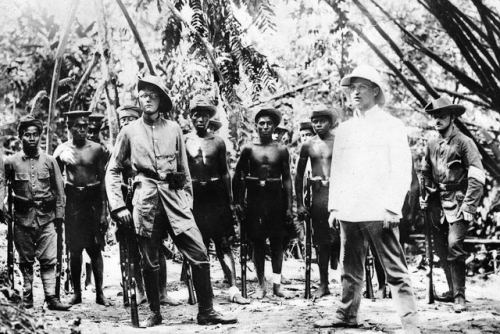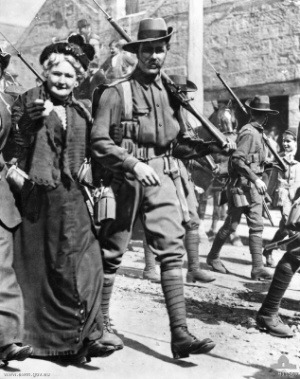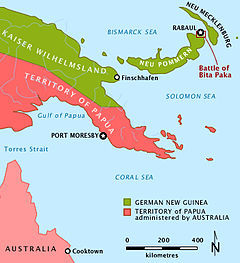peashooter85:New Guinea during World War I — The Battle of Bita Paka and the Siege of Toma,World War
peashooter85:New Guinea during World War I — The Battle of Bita Paka and the Siege of Toma,World War I typically brings up scenes of trench warfare from the Western Front. However World War I was fought by people from all over the world on battlefields all over the world. Before World War I, New Guinea was divided in two, the northern half controlled by Germany, the southern half British (administered by Australia). The islands of New Guinea were especially important for Germany because they were home to many supply and communications stations for the German East Asiatic Squadron, a fleet of cruisers which harassed Allied shipping in the Pacific and Indian Ocean throughout the war. As soon as the war began, the Australian government and military began planning for an operation to seize New Guinea. It would become the first independent Australian military operation and result in the first Australian casualties of the war. The operation was conducted by the Australian Naval and Military Expeditionary Force, consisting of 3,000 soldiers and sailors. Australia was quickly able to seize most of New Guinea without resistance, however at a radio station at a small village called Bita Paka on New Britain Island was a force of 61 German soldiers and 240 native police who were determined to fight.On September 11th, 1914 a force of 500 Australian soldiers approached Bita Paka intent on capturing the radio station. There they were met by German and native soldiers who fought a retreating skirmish, until eventually the settled into trenches and fortifications. The Germans had intended to draw the Australians into a trap, a pipe mine which was to be detonated when the Australians advanced across a road. However the Australians were able to locate and disable the mine, foiling the German plans. With superior numbers, the Australians were able to quickly outflank and overwhelm the German lines. The Germans retreated 19 miles through the dense jungle to the village of Toma, hoping to hold out until the East Asiatic Squadron arrived with reinforcements. However, the Australians would follow them with a 12 pounder artillery piece and commence bombardment of the village. Most of the native soldiers fled in panic, convincing the Germans to surrender. One German officer named Hermann Detzner escaped into the jungle with 20 native soldiers, where he spent the rest of the war in hiding. At the end of the operation six Australian soldiers were dead and four wounded. The Germans suffered 1 German officer dead, 30 native soldiers killed, and 11 wounded. -- source link



